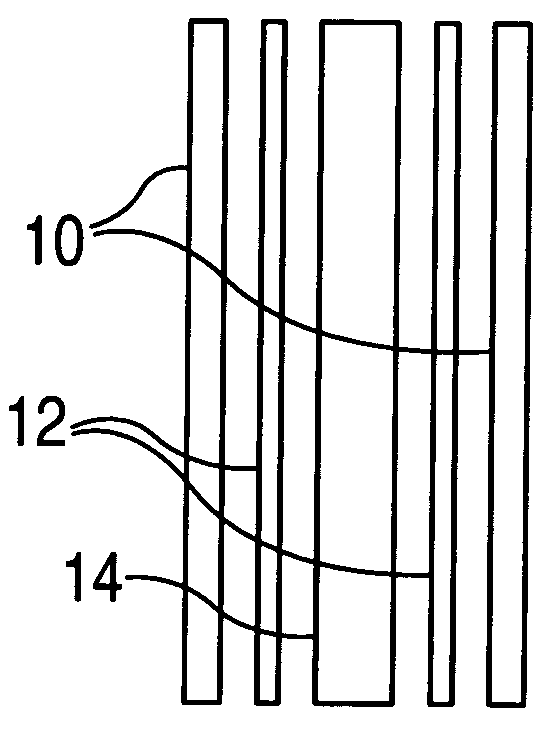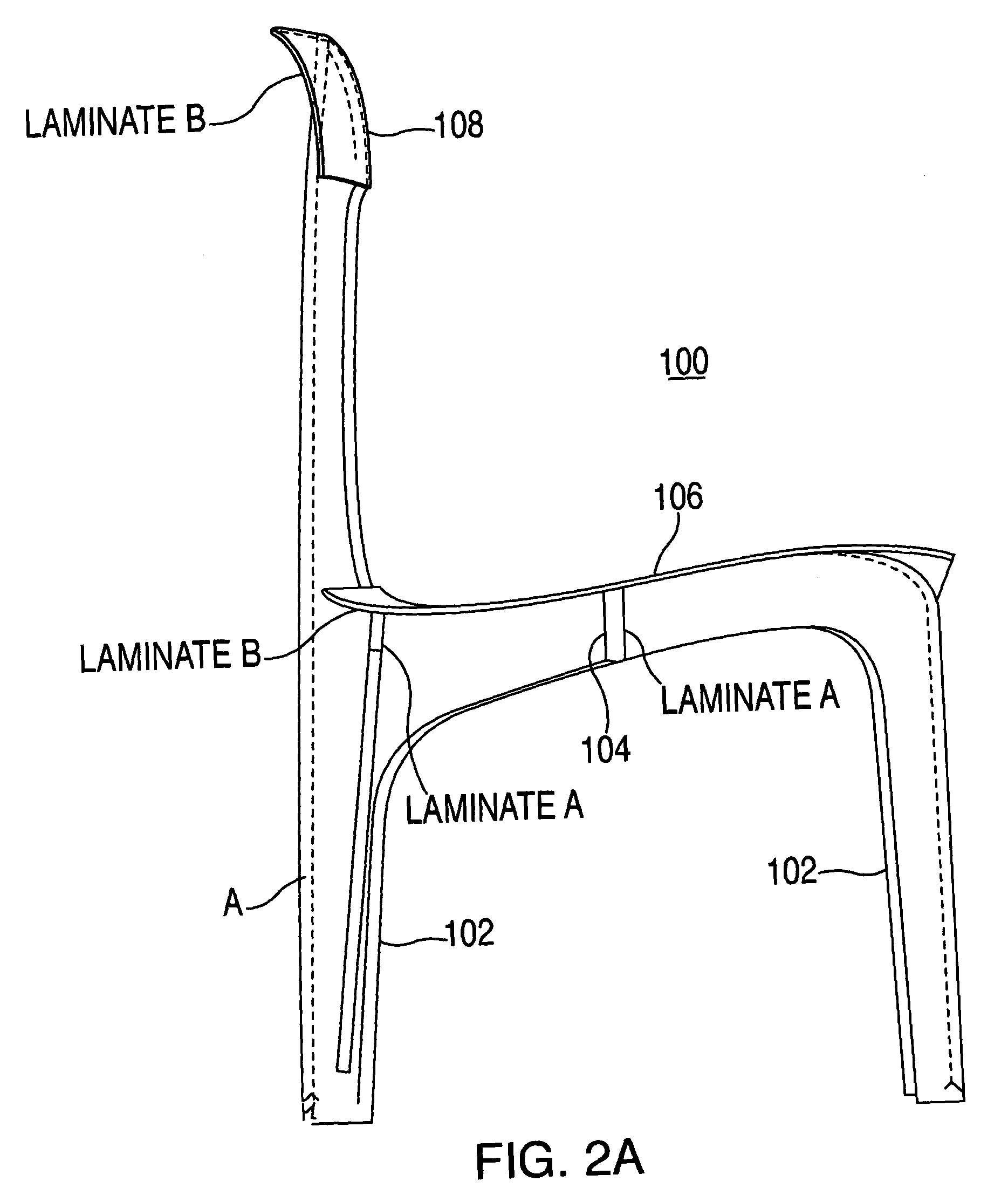Laminate materials for furniture and furniture pieces incorporating the same
a technology of laminate materials and furniture, applied in the direction of writing tables, seating furniture, yarn, etc., can solve the problems of wasteful wood stock materials obtained by merely cutting up trees, ineffectiveness, toxic glues used in the process, heavy and unappealing, etc., and achieve the effect of resisting warping
- Summary
- Abstract
- Description
- Claims
- Application Information
AI Technical Summary
Benefits of technology
Problems solved by technology
Method used
Image
Examples
Embodiment Construction
[0033] Dfferent members of a piece of furniture perform various functions and, therefore, several different laminate materials have been developed to perform these functions. Three such laminate materials are shown in FIGS. 1A-D. It should be understood that these figures are provided for illustrative purposes only, and are not to scale.
[0034] Laminate material A, the support laminate material, is shown in FIG. 1A, and it consists of five layers: two outer veneers 10 made of wood; two carbon fiber layers 12 disposed inwardly of the veneers 10 and a central wood layer 14 disposed between the carbon fiber layers 12. In the examples discussed here, the wood veneer layers 10 have a thickness of 0.100 in, the central wood layer 14 has been planned to 0.226 in and the carbon fiber layers 12 made of plain weave fibers having a weight of 5.7 oz and a thickness of 0.010″. The overall thickness of laminate material A is about ⅞ in. It should be understood that the laminate material A can be ...
PUM
| Property | Measurement | Unit |
|---|---|---|
| weight | aaaaa | aaaaa |
| weight | aaaaa | aaaaa |
| size | aaaaa | aaaaa |
Abstract
Description
Claims
Application Information
 Login to View More
Login to View More - R&D
- Intellectual Property
- Life Sciences
- Materials
- Tech Scout
- Unparalleled Data Quality
- Higher Quality Content
- 60% Fewer Hallucinations
Browse by: Latest US Patents, China's latest patents, Technical Efficacy Thesaurus, Application Domain, Technology Topic, Popular Technical Reports.
© 2025 PatSnap. All rights reserved.Legal|Privacy policy|Modern Slavery Act Transparency Statement|Sitemap|About US| Contact US: help@patsnap.com



